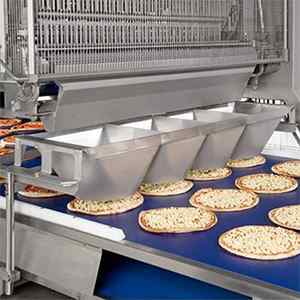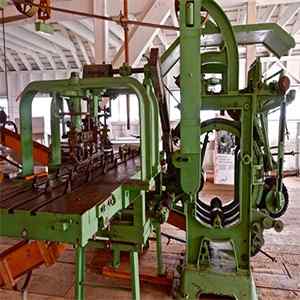Types Of Industrial Steam Valves - Applications, Advantages, And Disadvantages
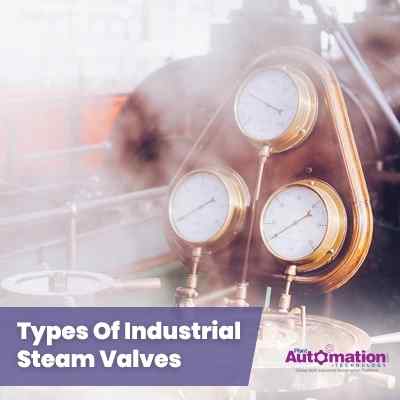
The flow and pressure level of steam and heated water vapor is controlled by the industrial steam valves. In a large number of industrial applications, steam is usually used. The turbines are powered by the steam to generate electricity and for chemical, food, and other product processing. Apart from this, these industrial steam valves are also used for heating, cleaning, and humidification. Some control is required for most of the applications and steam control valves have become a vital part of the process. Reducing the pressure of the inlet steam for process application is the major application of valves with steam. A steam valve in addition to controlling pressure can also control the temperature. Steam is used frequently at lower pressures in the industrial processes. The temperature is controlled through the control of steam pressure, since steam at low pressure has higher latent heat, and steam pressure and temperature are related. The lower steam pressure will also provide improved plant safety. Compared to the other heating methods, using steam for process heating provides multiple benefits. A few of the benefits include high efficiency, reliability, simplicity of the system, making steam a popular choice for modern process designers. Delivery and process efficiencies can be maximized with a state of the art automated valve by regulating steam pressure and flow.
Industrial Steam Valves
Although the steam flow is controlled by most types of valves, few special service conditions exist with steam regarding pressure and temperature. The most commonly used industrial steam valves are listed here in this article. They are -
- Angle Valves
- Ball Valves
- Bellows Valves
- Butterfly Valves
- Cartridge / Manifold Valves
A) Angle Valves
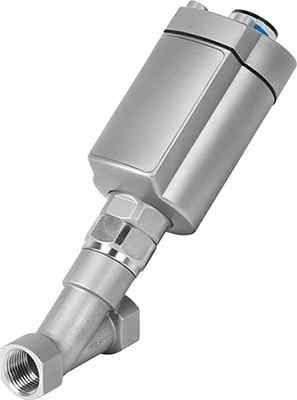
The angle seat valves are pneumatically actuated piston valves, providing linear actuation to lift the seal off its seat. The flow is minimally impeded in the open position as the seat is positioned under an angle. This would result in an excellent flow rate and a low-pressure loss. The industrial angle valves are used to regulate the flow of gases, vacuum, steam, and even aggressive fluids. They can also operate with high viscosity media, and high temperatures even under zero differential pressures. For harsh applications, the robust design of the angle seat valves makes it a popular choice and they have very high cycle lives. Hence, they are excellent long-life alternatives to ball valves. These valves can also be used as an alternative for solenoid valves, especially with viscous, contaminated media where typical solenoid vales would fail. The angle valves may be operated using a single-acting or double-acting configuration that influences its pressure rating.
| Also Read: Smart Valves: A Deep Dive into Automated Industrial Valve Systems |
Applications:
The angle valves can be used to deliver millions of cycles of operation in demanding applications such as steam, water, and aggressive media. Ideally suited for vacuum applications and can be used in fast-acting applications up to 1000 cycles per hour with an expected life of over 10 million cycles. They are mainly used in industries, including chemical, water, and sewage, food and beverage, oil and gas, etc.
Advantages:
- A high flow rate with low-pressure loss is obtained
- Elimination of water hammer and resistance to backflow
- Provides longer service life than ball valves
B) Ball Valves
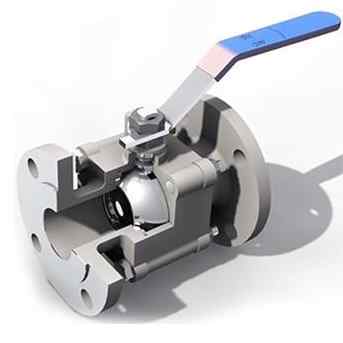
The flow of a liquid or gas is controlled by a ball valve using a rotary ball having a bore. The medium can flow through or is blocked by rotating the ball 90 degrees around its axis. Even when the valve is not in use for a long time, they are characterized by a long service life and offer a reliable sealing over the life span. And that's the reason why they are more popular as a shut-off valve than the gate valves. The ball valves in special cases are used as control valves. Due to the relatively limited accuracy of controlling the flow rate, this application is less common. However, the ball valve offers some advantages.
Applications:
- Some typical applications of ball valves are -
- Low-point drains and high-point vents in liquid, gaseous, and other fluid services
- Cooling water and feedwater systems
- Steam service
- Air, liquid, and gaseous applications requiring bubble-tight service
- Instrument root valves
Advantages:
- Quick to open and close
- Lighter in weight and smaller in size than a gate valve
- Provides bubble-tight service
- Several designs of ball valves provide the flexibility of selection
- Can be used in slurry and clean purposes
- Multi-port design provides versatility and reduces the number of valves required
- The force required to actuate the valve is smaller than that required for the gate/globe valve
- Reliable service in high-pressure and high-temperature applications are provided with high-quality ball valves
Disadvantages:
- Not suitable for sustained throttling applications
- The suspended particles can settle and get trapped in body cavities in slurry or other applications causing leakage, wear or valve failure
C) Bellows Valves
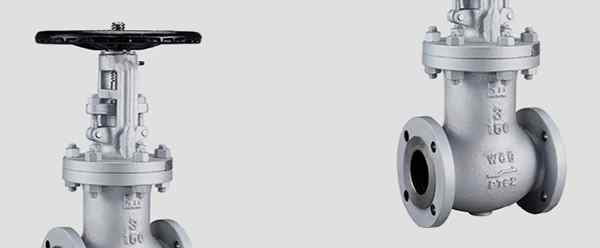
A bellow seal valve has a compact structure and is one kind of control valve used to balance the pressure. The bellows are used as the valve stem sealing components of the bellow seal valves. Instead of stuffing boxes that are used for the ordinary valve or structure, the valve adopts the structure with bellows or bellows and stuffing boxes to avoid the leakage of the valve stem. The bellow seal valve is particularly suitable for pipelines of steam and explosive, flammable and hazardous media. The bellow seal valve overcomes the common latent defects including aging of the stuffing box and temperature sensitivity, because of bellow's properties of aging resistance and deformation. All these defects are owned by the valve sealed by packing. A bellow seal globe valve is operated as an obstruction between air and fluids. The valve at the same time can prevent fluids leaking to the air and guarantee zero leakage of pipelines. To avoid process fluids from eroding the valve stem, the bottom of the bellow is welded to the valve stem of the bellow seal globe valve.
|
Also Read: Industrial Valve Sealing Solutions: Preventing Leaks and Enhancing Performance |
Applications:
- Heat transfer media
- Vacuum/Ultra-high vacuum
- Highly hazardous fluids
- Nuclear plant, Heavy water plant
- Costly fluids
Advantages:
- There is no fluid loss and instead better security of the factory's equipment
- Durable sealing structures without leakage
- Operating life is long with less maintenance and fewer operating costs
- Its cost is moderate
- Adaptable for absolute and differential pressures
- Able to deliver high force
- It's good to the low-to-moderate range
Disadvantages
- Unsuitable for high pressures
- Needs ambient temperature compensation
- The availability of construction metals is limited
D) Butterfly Valves
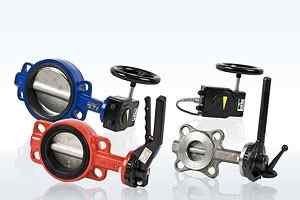
The working mechanism of butterfly valves is quite similar to the ball valves. The butterfly is nothing but a disk connected to a rod. The valve closes when the rod rotates the disc by a quarter turn to a position perpendicular to the flow direction and when the valve opens, the disk is rotated back to allow the flow. Due to their lightweight, lower costs, small installation footprint, availability in large sizes, and quick operation, the butterfly valves are used for on-off or modulating services. Handles, gears or automatic actuators are used for the operation of these valves.
Applications:
Among diverse industries and applications, the butterfly valves are widespread such as food, pharmaceutical, chemical and oil, wastewater treatment, water supply, gas supply, fuel handling, and fire protection. These valves are available in large sizes and are suitable for handling liquids and slurries with relatively large amounts of solids at low pressures.
| Also Read: Flow Control Essentials: Exploring the World of Industrial Valves |
Advantages:
- The butterfly valves are small and when actuated they open and close very quickly
- Compared to the ball valve, the disc is lighter, and the valve requires less structural support of comparable diameter
- As the butterfly valves are very accurate, they are very advantageous in industrial applications
- They require very little maintenance and are quite reliable
Disadvantages:
- A portion of the disc is presented to the flow even when fully opened
- Regardless of the setting, the butterfly valve always results in a pressure switch across the valve
- The movement of the disc may be stopped by the thicker liquids
E) Cartridge / Manifold Valves
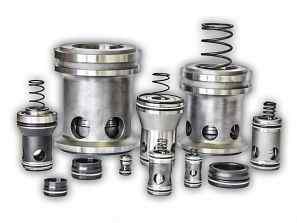
The industrial hydraulic valves are also known as 2/2-way valves or logic elements, are used for the directional check, pressure, and flow control. They have a complex design that can be used in hydraulic manifold systems for many types of mobile and industrial machinery. These products are suitable for applications that require leak-free control and high flow rates. The term "cartridge" usually refers to directional, pressure, and low control valves that screw into a threaded cavity. Although some manufacturers have units that will flow more than 100 gpm, these cartridge valves are mostly rated for low flows - 40 gpm or less.
Advantages:
- Lightweight and compact size
- Economical
- Leakage resistant and efficient
- Convenient, neat and easily serviced
Disadvantages:
- Non-repairable cartridges
- Logistics
- Non-standard cartridges
- Cost








